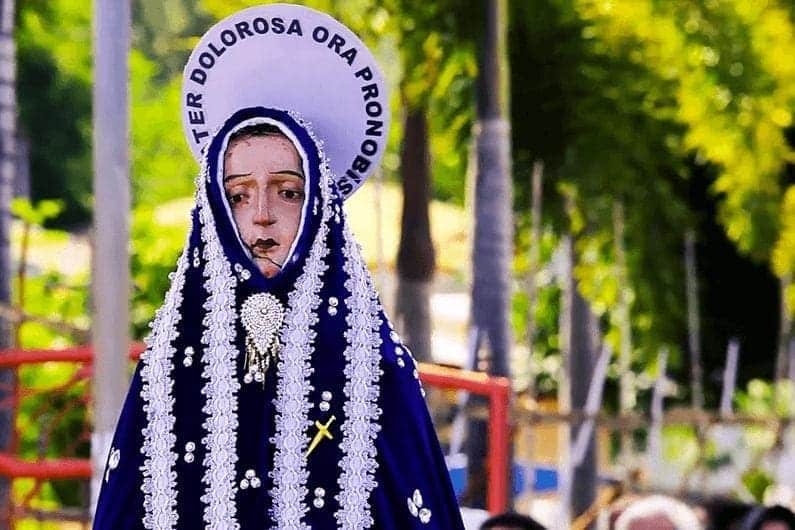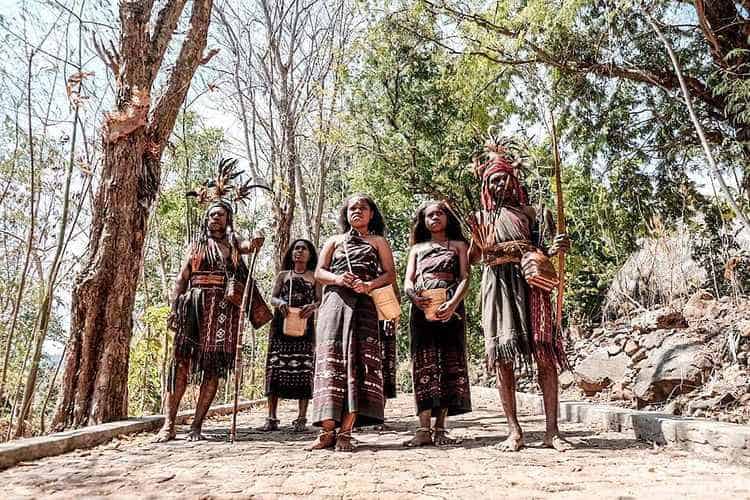The complete history of the Semana Santa Procession on this page may provide useful information for fellow pilgrim travelers when looking for a destination to celebrate the holy week once a year.
The spiritual tradition of Semana Santa in Larantuka, East Flores, East Nusa Tenggara (NTT) has been going on for more than 500 years.
Ave, Maria, cheia de graça,
o Senhor é convosco.
Bendita sois vós entre as mulheres,
and blessed is the fruit of your womb, Jesus.
Holly Mary mother of god,
rogai por nós, pecadores, agora e na hora da nossa morte. Amen.

The History of the Semana Santa Procession
Until now, the implementation of this tradition has become one of the attractions of spiritual tourism in the eastern part of Indonesia. Flowers East Nusa Tenggara.
What is this procession series? The following is a thorough review of the history of the Semana Santa procession in East Nusa Tenggara.
Tourists of Recent Years
Pilgrims flocking to Semana Santa celebrations have become a common sight in recent years. Pilgrims from local communities to tourists from outside the region can reach thousands of people.
This can not be separated from the incessant promotion and the number of travel and tour service companies that offer services various tour packages to Larantuka when Holy Week takes place every year.
Not a few tourists do booking hotels and guesthouses well in advance so that they can follow and witness the Semana Santa procession in person.
Not only hotels and guesthouses, monasteries and houses of local residents are often an alternative place to stay for these pilgrims. Understandably the Semana Santa process is a special celebration that is inseparable from the history of Larantuka itself.
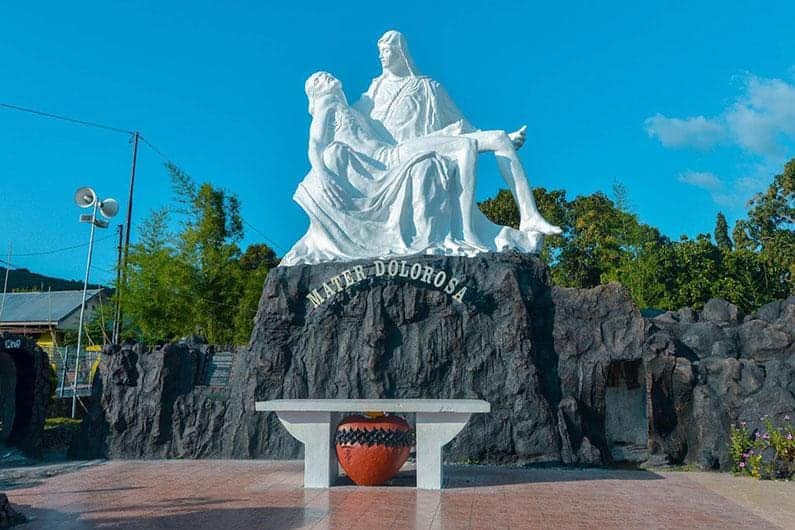
Until now, the Semana Santa tradition that has lasted for 5 centuries has also been the driving force of Larantuka's economy and has become a magnet for Catholics from all over the world to come to Larantuka during the holy Easter week.
History of Semana Larantuka
The Semana Santa process takes place at the end east of Flores Island, precisely in a small town at the foot of Mount Ile Mandiri, Reinha Rosari Larantuka.
There are several versions of the story of how this procession started. However, from all the stories circulating, it is certain that the Semana Santa tradition began with the discovery of the Tuan Ma Statue on Larantuka Beach in 1510.
The statue is thought to have washed ashore due to the sinking of a Portuguese ship in Larantuka waters.
On the orders of the village head of Lewonama, the statue of Tuan Ma was then kept in the house of worship (korke). Local residents who at that time did not know the figure of the statue, then respected it as a sacred object.
People also often give offerings when celebrating certain events such as harvest celebrations and others.
The Discovery of Lord Ma .'s Statue
When Dominican missionaries came to Flores some time later, an unnamed priest of the order saw the statue. The priest then introduced the statue of the Virgin Mary to the public.
The King of Larantuka at that time, Ola Adobala was then baptized with the title Don Fransisko Ola Adobala DVG (Dias Viera de Godinho). Likewise, the Larantuka community began to recognize the Catholic faith.
Read also : Larantuka History
This story was passed down to the nine generations of the first inventor of the statue, Wilhelmus Resiona.
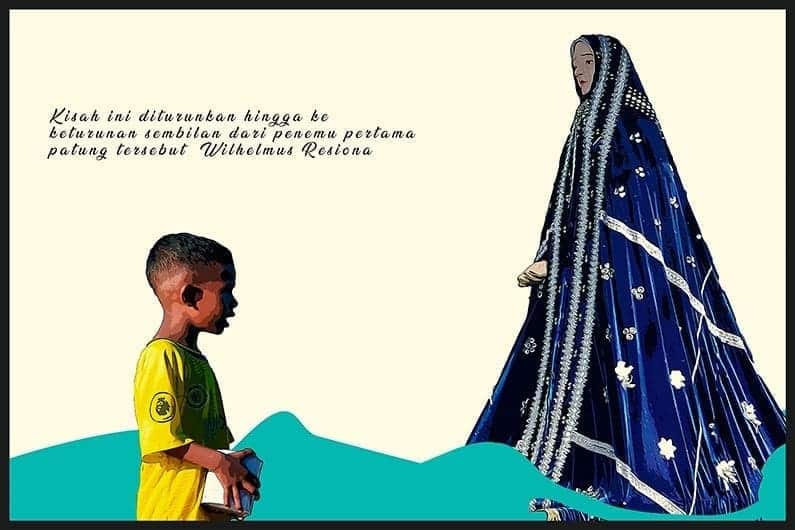
After the Lord Ma statue was enthroned on the korke, people saw it as a refined object that was respected as a sacred object.
Along with the increasing number of Catholics in the area, the Statue of Tuan Ma who is recognized and respected as the Virgin Mary encourages the community to hold a devotion (surrender of the whole person to God and His will as an embodiment of love).
Wisdom of Wilhelmus Resiona
Another tale in the Semana Santa procession mentions that the discovery of the Tuan Ma statue originated from the young Resiona who saw a goddess walking on water. The young man was then amazed at what he saw and asked the figure of the woman.
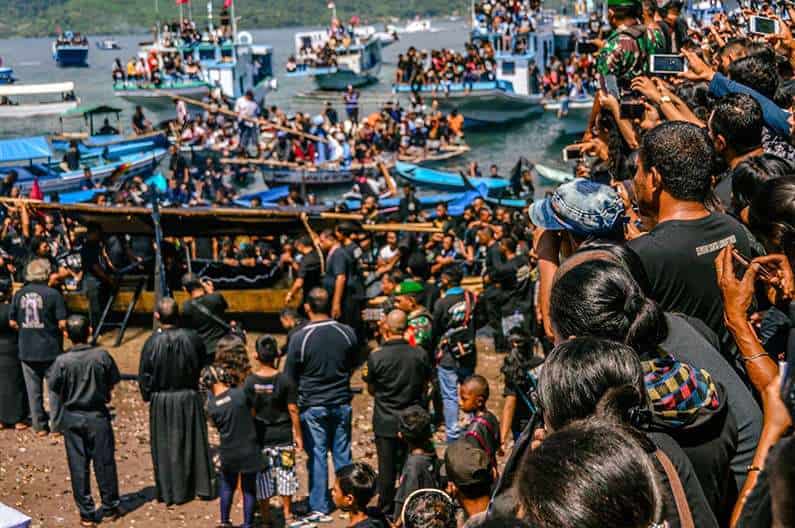
However, the woman answered in a foreign language. Then the Resiona youth reported his experience to the tribal elders. When he and the tribal elders returned to look for the goddess, it turned out that the goddess had transformed into a beautiful statue with a serene and calming expression on her face.
Interestingly, around the statue appear symbols composed of shells. The meaning of the symbol was only known after the missionaries came and interpreted the inscription which reads 'Santa Maria Reinha Rosary'.
King Larantuka then made the statue of the Virgin Mary as a goddess they respected and worshiped.
The statue of the Virgin Mary is considered a gift from the creator and as a sign that the people of Larantuka will always be helped and protected by the goddess.
The people of Larantuka then called the statue as Tuan Ma, which means sir and mama. While the Lamaholot people call the statue the God of Heaven and Earth or Rera Wulan Tanah Ekan.
The Lamaholot people on the coast of Flores always pray in front of the Tuan Ma statue before clearing land for farming or when they need healing from illness.
When the Larantuka troops were about to go to war, they performed a traditional ceremonial first in front of the Tuan Ma statue for the success of defeating the enemy. Interestingly, people's requests are always granted.
Semana Santa Procession Series
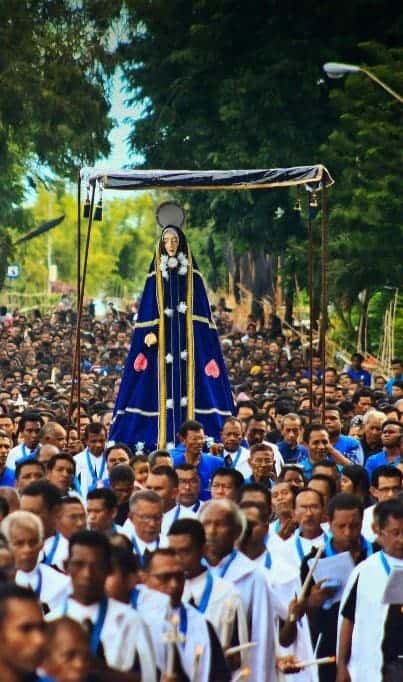
Devotion to the Virgin Mary through the statue of Tuan Ma was possible to develop thanks to the role of Konfreria Reinha Rosari Larantuka who spread the Catholic faith in Larantuka. This devotional tradition came to be known as Semana Santa which is still practiced today.
The Kingdom of Larantuka has a special place in the Semana Santa procession series thanks to its role in the historical journey of the Semana Santa tradition.
In current practice, the Semana Santa tradition on Flores Island begins on Trewa Wednesday or Ash Wednesday where prayers are held during Lent.
On this Trewa Wednesday, local Catholics gather and pray in the chapel to remember the story of Judas Iscariot's betrayal of Jesus in the Garden of Gethsemane.
In the evening, a ritual of sounding is performed as a symbol of mourning the capture of Jesus who is then dragged around the city of Nazareth. Almost all tools are beaten to produce a sound, considering that the next day is Maundy Thursday.
On Maundy Thursday, the city will be quiet and lonely while the church will hold the Tikam Turo ceremony. The Tikam Turo ceremony is the installation of candles along the road which will be passed by the Good Friday procession.
Conferia Officer
Meanwhile, the statue of the Virgin Mary and the statue of Jesus in the Chapel of Tuan Ma (Mother Mary) and the Chapel of Tuan Ana (Jesus) which were sealed in the coffin for a year were opened by conferia officers.
Conferia officers who have been appointed by oath must open the coffin with great care. Then, the hundreds-year-old statue is bathed and dressed in mourning by appointed officers.
The evening is a time to remember the last supper of Jesus and his 12 disciples before the betrayal of Judas Iscariot. The last supper is remembered by Catholics by celebrating mass at the Reinha Rosari Larantuka Cathedral.
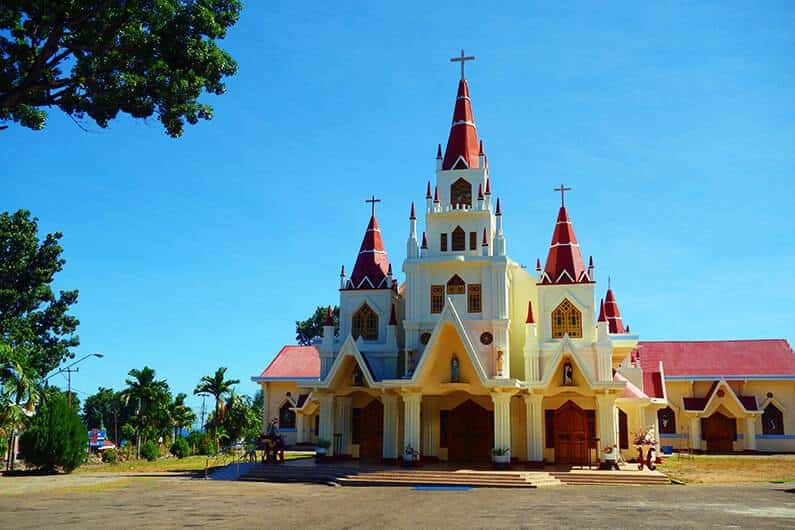
The doors of the Tuan Ma Chapel and Tuan Ana Chapel will be opened to the public at the peak of the Sesta Vera celebration or Good Friday. Starting at 10 am, people usually have started to come to pray.
The procession of the statues of Mr. Ma and Mr. Ana
The statue of the Virgin Mary in Tuan Ma's Chapel will be paraded to Tuan ana's Chapel to be met with the statue of Jesus.
The route of the procession of the statue of the Virgin Mary is in accordance with the Tikam Turo route. Then the two statues will be paraded to the Renha Rosari Larantuka Cathedral. Catholics are allowed to pray in front of the statue as long as the statue is in the cathedral.
Semana Santa's 500 Years Procession
The Semana Santa procession has not yet been completed because the two statues still have to be transported to the Betel Tree Chapel in Pante Kuce by motor boat.
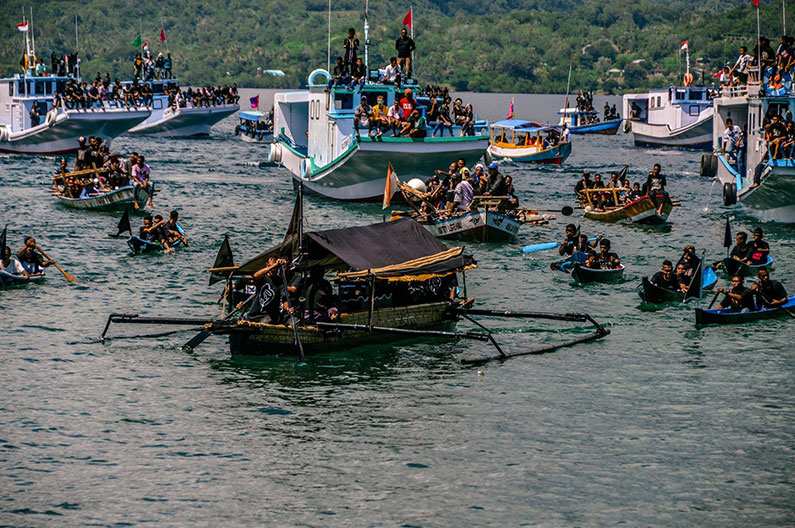
Catholics usually accompany the two statues on a motor boat that has been provided.
The Semana Santa procession at Easter in Larantuka has been going on for more than 500 years.
This tradition is increasingly attracting the attention of tourists because it has been designated as religious tourism by the Ministry of Tourism.
For the Larantuka Catholic Church, the Easter celebration of Semana Santa is a combination of religion and custom, not just the commemoration of the Day of the Resurrection of Isa Al Masih.
Sesta Vera, which is the highlight of the Semana Santa celebration, also shows the close blend of Lamaholot and Portuguese cultures.
This tradition is preserved jointly by the Laskar Maria association (Confreria de Rosari), the Semana tribes and the Larantuka Royal family.
Interpretation of the Face of Our Lady
The Tuan Ma statue can only be found once a year, from Holy Thursday to Good Friday. This is what makes the Semana Santa procession eagerly awaited by people and pilgrims.


Interestingly, everyone has a different interpretation after witnessing the statue of the Virgin Mary firsthand.
There is a belief in the face of the Virgin Mary that looks in accordance with the faith and beliefs of each.
If the statue of the Virgin Mary looks gloomy, it can mean that you are in trouble. If the statue looks radiant, it can mean you will get blessings this year.
Experiences like this make the pilgrims feel touched and touched when they prostrate and make their wishes before the statue of Tuan Ma.
If you liked this article, then please subscribe to us YouTube Channel to support us in presenting tourist videos. You can also find us on Instagram or direct to WhatsApp me to consult your travel plans.
